In Situ Measurement of Aggregation Effect of Nanoscale Zero-valent Iron in the Presence of Natural Organic Matter Based on the Dynamic Light Scattering Technique
-
摘要: 纳米零价铁原位修复地下水污染是近年发展起来的新技术,通过改性合成不同种类纳米零价铁可以克服其易团聚易氧化的问题,水体中存在的天然有机质也会对纳米铁的分散性和反应活性产生影响,因此开展原位测试并研究不同种类纳米铁在水中的团聚效应具有重要意义。本文对实验合成的纳米零价铁、羧甲基纤维素包覆纳米零价铁、膨润土负载纳米零价铁以及商用纳米零价铁,基于动态光散射技术(DLS),运用纳米粒度/Zeta电位分析仪,结合透射电子显微镜(TEM)和沉降光谱曲线等手段,对比研究了天然有机质(腐植酸HA)对纳米铁团聚效应的影响。结果表明,羧甲基纤维素包覆或膨润土负载改性提高了纳米零价铁颗粒的分散稳定性,有效抑制了团聚沉降,团聚体粒径分布在1000 nm以下。HA会吸附在纳米铁颗粒表面,从而增加静电排斥力,进一步减缓了团聚效应,尤其是对膨润土负载纳米零价铁的影响最为显著,其团聚体粒径能降至100 nm以下,沉降速率也极大减缓,分散稳定性表现最佳。本研究表明DLS结合TEM表征纳米颗粒是获得更加丰富的微观粒子信息的一种非常重要的手段。Abstract: Nanoscale zero-valent iron (nZVI) is a newly developed method for in-situ remediation of groundwater in recent years. To overcome easy oxidation and aggregation, modification on nZVI is widely adopted. In addition, the ubiquitous natural organic matters (NOM) in water also affect the scatter and reaction activity of nZVI. Therefore, it is of significance to study the aggregation effect of different kinds of nZVI in water by in-situ measurement method. Besides commercial nZVI (RNIP), normal nZVI, carboxymethyl cellulose coated nZVI (C-nZVI) and bentonite supported nZVI (B-nZVI) was synthesized. Nano particle size/Zeta potential analyzer based on the Dynamic Light Scattering (DLS) technique, Transmission Electron Microscope (TEM) and UV-Vis spectrum of sedimentation were employed to characterize the aggregation behavior of above four types of nZVI in the presence or absence of humic acid (HA), a representative NOM. The results showed that the dispersion stability of C-nZVI and B-nZVI was improved significantly after modification and the aggregation precipation was suppressed. And size distribution of aggregates stabilizes at below 1000 nm. Humic acid adsorbed onto the surface of nanoparticles, which can increase the electrostatic force to prevent aggregation of nZVI. The effect of HA on B-nZVI is most obvious for B-nZVI aggregates with diameters below 100 nm and the sedimentation was very slow, indicating the dispersion performed the best among all kinds of nZVI. It can be concluded that the combination of DLS technique and TEM to characterize nanoparticles is a valuable approach for more comprehensive information.
-
纳米零价铁原位注射处理地下水污染是近年发展的环境修复新技术[1-3],获得纳米零价铁可以通过电化学法、声化学法、气相还原法或液相还原法制备[4]。纳米铁具有比表面积大、活性强的特点,但是易团聚、易氧化的问题使得纳米零价铁在实际应用中受到限制。因此通常在液相法制备过程中采取负载或包覆手段改性纳米零价铁,提高其抗氧化性或分散性[5-8]。本课题组近年成功合成了膨润土负载纳米零价铁[9]、羧甲基纤维素包覆纳米零价铁[10],通过改善其分散性提高了去除水中六价铬的能力。最近Nicolás等[11]和Mohammad等[12]也分别通过合成黏土矿物负载和淀粉包覆的纳米零价铁提高了其在水溶液中铅和砷的去除率。尽管改性后的纳米零价铁的稳定分散性得到改善,但是在实际地下水修复过程中,这些纳米铁颗粒不可避免地还会存在不同程度的团聚现象,特别是经过不同种类材料改性处理的纳米零价铁,其具有的团聚效应及分散性也不尽相同,这些因素关系着纳米铁的稳定性、迁移性和反应活性,从而会直接影响污染修复效果,因此系统研究不同种类纳米零价铁的团聚效应具有十分重要的科学意义,然而这方面的定量比较研究还未见报道。
一般来说,人们表征纳米铁颗粒的团聚性多是采用直接观察法,如透射电子显微镜(TEM)和沉降光谱曲线[13-14],但是这类方法有一定的局限性。例如,透射电子显微镜表征前处理制样(一般需干燥环境)使得观察到的纳米铁颗粒不能反映其在水中的分散状态,镜下观测的样品台上纳米颗粒的大小和团聚性也无法真实地反映其在水环境中的状态;运用光谱法进行沉降曲线的测定能够在一定程度上获得纳米铁颗粒在水中的整体分散稳定性,但无法获取更多颗粒微观信息。随着近年纳米技术仪器的发展,基于动态光散射(DLS)技术原理,纳米粒度/Zeta电位分析仪可以实现在水相中原位测定纳米粒子的物理性质(如粒径、表面电荷等),并且该方法具有制样简单、样品用量小、操作快捷、成本低、结果准确且不破坏不干扰体系原有状态等优点。Ghulam等[15]利用DLS技术研究了不同盐浓度和包覆剂对纳米二氧化钛团聚效应的影响。也有新发展的流体相扫描透射电镜,可以原位观察纳米颗粒行为,例如Emre等[16]通过这种电镜,原位观察了氧化铝的水化层的变化情况。但与DLS技术相比,流体相扫描透射电镜价格昂贵,操作复杂,专业性要求很高。因此,DLS是目前方便实现原位测定溶液中纳米铁颗粒团聚效应的最佳选择。
纳米颗粒的地球化学行为受到自然环境控制,在实际应用纳米铁颗粒进行地下水原位修复时,体系的pH值、温度、离子强度等条件相对稳定。在这种情况下,自然界中广泛存在的天然有机质(NOM)会对纳米颗粒的稳定性和团聚性起到很大的影响。Stacey等[17]利用DLS,发现NOM抑制了纳米金颗粒的团聚性,在水溶液中变得更加稳定,Yin等[18]也验证了NOM对纳米银颗粒的团聚起到很强的抑制作用。那么活性更强、更容易团聚的纳米零价铁颗粒是否也会遵循同样的规律呢?实际上,2010年本课题组已观察到试剂瓶中NOM促进了纳米零价铁的分散稳定性[19],但缺乏微观定量表征。另外,不同种类的纳米零价铁在NOM存在下团聚体行为也缺乏研究。因此,本文通过实验合成纳米零价铁(nZVI)、羧甲基纤维素包覆纳米零价铁(C-nZVI)、膨润土负载纳米零价铁(B-nZVI),包括商用纳米零价铁(RNIP)在内,运用DLS技术,原位在水相中直接表征几种纳米铁的微观团聚体大小和稳定性,以腐植酸(HA)为NOM代表物,探究HA对纳米铁团聚效应的影响,为定量研究纳米零价铁的物化性质以及修复应用评估奠定基础。
1. 动态光散射测试主要原理
溶剂分子不断运动和悬浮的颗粒物产生碰撞,使得溶液中小颗粒做无规则布朗运动。测试仪器通过光源照射粒子,使得粒子向各个方向散射光。仪器内部屏幕可以捕捉光斑,粒子的散射光若以同一相位到达屏幕则相互叠加形成亮斑;以不同相位到达的则相互消减,形成黑暗区域[20]。由于粒子不停运动,散射光斑也出现波动,这会引起光强的增加和减少,导致光亮区域和黑暗区域交替出现,光强呈波动态,仪器测定光强波动的速度,该速度就是颗粒布朗运动的速度,也称为扩散速度。
根据斯托克斯-爱因斯坦方程:

式中:D为扩散速度;k为波尔兹曼常数;T为绝对温度;η为黏度;DH为流体力学直径。
可以得出,在样品温度和连续相黏度一定的情况下,扩散速度与测定粒径呈定量关系。因此,根据光强波动的速度,可以计算出颗粒粒径的大小。这种技术被称为光子相关光谱法或准弹性光散射法,现在通常称作动态光散射法[21]。
2. 实验部分
2.1 仪器与主要试剂
Omni型纳米粒度/Zeta电位分析仪(美国布鲁克海文仪器公司);UV-1750型紫外可见分光光度计(日本岛津仪器有限公司)。
KQ5200DB型数控超声波清洗机(昆山超声仪器有限公司);BT224S型电子天平(北京赛多利斯仪器系统有限公司)。
七水合硫酸亚铁(FeSO4·7H2O,分析纯,国药集团化学试剂有限公司);硼氢化钠(NaBH4,98%,Aladdin公司);羧甲基纤维素钠(CMC,化学纯,国药集团化学试剂有限公司);钠基膨润土(蒙脱石含量大于90%,Alfa Aesar公司);商用纳米铁(RNIP,日本Toda公司);腐植酸(HA,Aldrich公司);实验用水均为超纯水(电阻率18.3 MΩ·cm)。
2.2 纳米零价铁和改性纳米零价铁制备
纳米零价铁的制备采用液相还原法。简言之,将一定浓度的硼氢化钠水溶液以每秒2滴速率滴加于50 mL硫酸亚铁溶液中,生成黑色颗粒物纳米零价铁,反应在通氮气保护的三颈烧瓶中进行,滴加完毕后继续搅拌30 min,然后醇洗、水洗各三次并将产物冷冻干燥保存,待用[22]。
改性纳米零价铁的制备是在加入硫酸亚铁溶液后,加入一定量的羧甲基纤维素或膨润土,按上述步骤分别获得羧甲基纤维素包覆纳米零价铁(C-nZVI)和膨润土负载纳米零价铁(B-nZVI)[9-10]。
2.3 纳米铁的沉降及分散性研究
纳米铁的悬浮性是判断其迁移能力的重要指标,同时又与其分散性有着密切的关系,可以利用沉降光谱曲线对纳米铁的分散性进行对比研究[10]。实验中,将纳米铁放入5 mmol/L碳酸氢钠溶液中,超声20 min制成1 g/L浓度的悬浮液,取4 mL置于UV-1750型紫外可见分光光度计的比色皿中,以508 nm波长连续扫描2000 s。为探究天然有机质的影响,实验在有无10 mg/L的HA存在下分别测试进行对比分析。
2.4 纳米颗粒Zeta电位测量
纳米颗粒Zeta电位值与体系的稳定性有很大的关系,Zeta电位值(正或负)越高,纳米颗粒间的静电斥力越大,体系相对越稳定。实验中,将纳米零价铁放入5 mmol/L碳酸氢钠溶液中,超声20 min制成0.1 g/L纳米铁悬浮液,在不同时间下测量Zeta电位值。实验在有无HA(10 mg/L)条件下分别进行测试分析。
2.5 纳米颗粒团聚体粒径测量
基于DLS原理,运用纳米粒度/Zeta电位分析仪实际上获取的是纳米颗粒团聚体的尺寸大小。实验中,将纳米零价铁放入5 mmol/L碳酸氢钠溶液中,超声20 min后,转移至仪器样品池,纳米铁浓度0.03 g/L,以90°测量角在线监测团聚体粒径分布随时间变化规律。实验在有无HA(10 mg/L)条件下分别进行测试分析。
3. 结果与讨论
3.1 X射线衍射和透射电镜表征纳米铁颗粒形貌和分散性
通过分析样品的XRD特征峰来识别零价铁的存在(图 1)。四种纳米铁颗粒样品在44.7°处都有明显特征峰,对照标准谱图可知对应(110)晶面衍射(44.67°),说明样品颗粒主要含单质零价铁。
透射电镜下直接观察颗粒大小和形貌(图 2)。可以看出,实验合成得到的nZVI粒径为50~100 nm,呈链状,团聚严重且分散性较差(图 2a)。当有HA存在时,HA吸附在纳米铁颗粒表面或分布在颗粒周边,一定程度上改善了纳米铁颗粒的分散性(图 2b)。商用纳米铁RNIP有较为明显的核壳结构(图 2c),形状可见圆形和条块状,与Crane等[23]的报道一致。合成制备的CMC包覆纳米铁颗粒C-nZVI表层CMC使得颗粒明显增大至100~200 nm,粒径更加均匀(图 2e)。合成的膨润土负载纳米铁颗粒B-nZVI使得纳米铁分散性得到极大改善(图 2g)。与图 2b类似,在天然有机质HA存在下,这几种纳米铁的分散性得到了显著提高(图 2d、f、h)。
3.2 沉降光谱曲线表征纳米铁团聚体分散性
通过沉降光谱测量曲线(图 3),可以看出制备的裸露纳米铁nZVI稳定性不好,在极短时间内就会发生团聚沉降,而包覆型和负载型纳米零价铁的沉降速度明显减小。Trishikhi等[13]曾经比较了C-nZVI纳米铁与nZVI的沉降曲线,发现C-nZVI纳米铁颗粒的分散性更好,在水溶液中更加稳定。本实验中可以看出C-nZVI和B-nZVI这两种改性纳米铁的稳定性都得到了较大的提高。非常明显的是,在天然有机质存在情况下,每种纳米铁的沉降速度均显著降低,说明腐植酸HA对纳米铁颗粒增强了其分散性而减缓团聚效应。
3.3 DLS技术表征纳米铁颗粒团聚体尺度
利用动态光散射原理,在水相中原位测试几种纳米铁颗粒在有无腐植酸HA存在情况下的粒径分布变化,数据见表 1,其中nZVI的测试数据如图 4所示,其余几种纳米铁团聚体分布规律类似。可以看出,nZVI和RNIP颗粒粒径分布较宽,部分颗粒团聚体尺寸较大,小粒径团聚体随时间逐渐长大,甚至达到微米级,经过改性后的纳米铁粒径小且分布更均匀。He等[24]研究认为CMC对纳米铁的改性可以使得其平均粒径变小,粒径分布变窄,并且随CMC浓度的增加,纳米铁小颗粒增多,说明改性可以抑制小颗粒的团聚变大。本文实验研究中,羧甲基纤维素包覆或膨润土负载改性提高了纳米零价铁颗粒的分散稳定性,有效抑制了团聚沉降,团聚体粒径分布基本稳定在300~400 nm之间,并且随时间变化很小。对比腐植酸HA的存在,结果显示HA对团聚体的尺寸有重要控制作用,粒径原来分布较宽的nZVI和RNIP变得相对集中,原本粒径分布集中的C-nZVI和B-nZVI团聚体粒径变得更小,都达到了100 nm以下,说明C-nZVI和B-nZVI纳米铁颗粒的分散性得到了显著增强。通过DLS表征的团聚体效应变化规律,反映了纳米铁的分散稳定程度,与沉降光谱曲线获得的相关信息是吻合的,同时能更加充分地定量给出微观粒子团聚体尺寸分布。
表 1 有无腐植酸环境中几种纳米铁的粒径分布变化Table 1. Aggregation size distribution of several types nano-iron samples in the presence or absence of HA纳米铁种类 粒径分布 nZVI 500~1500 nm nZVI+HA 200~500 nm RNIP 500~1000 nm RNIP+HA 500~500 nm C-nZVI 400~400 nm C-nZVI+HA 100~100 nm B-nZVI 300~400 nm B-nZVI+HA 30~60 nm 需要指出的是,TEM观察到的nZVI和RNIP粒径为50~100 nm,而DLS测试获得的尺寸最小也达到了300 nm,甚至随着时间的推移1 μm尺度的粒径也开始大量出现。同样的,TEM观察到改性后的纳米铁颗粒也均比DLS测试出来的粒径小。这是因为动态光散射跟踪的是颗粒团聚体的尺寸变化,而TEM往往只能根据镜下测算单个纳米颗粒的尺寸。此外,测试结果发现在腐植酸HA存在下,DLS测得C-nZVI粒径从平均400 nm减小到100 nm,而B-nZVI粒径从平均400 nm下降至约50 nm。这些团聚体变化的动态信息很难从TEM下直接获得,这正是运用动态光散射原位分析纳米颗粒在水相中形态变化的优势,也是将来表征纳米颗粒的重要补充手段。
值得一提的是,本文DLS测量均在90°的入射角下测量,属于单角度动态光散射测量。早在1987 年,Cummins等[25]已经提出采用多角度动态光散射技术测量颗粒粒径。多角度动态光散射技术一般是测量一些形状不规则、形态变化多的纳米颗粒。与多角度动态光散射相比,单角度动态光散射的噪音较小,测量值误差较小。本文研究的纳米零价铁颗粒形状规则,形态单一,因此使用单角度测量是合理的。此外,由于DLS技术测得的粒径值是通过反演算法得来的,因此选取适合的反演算法对结果有较大影响,本文使用的布鲁克海文公司的产品Omni型Zeta电位/粒径分析仪提供的两种算法,分别是CONTIN算法和NNLS算法,因为CONTIN算法测量点取值多,因此本文中采取的数据均为CONTIN算法下获得。
3.4 纳米铁颗粒Zeta电位表征
由上述讨论可以看出,经过改性或有腐植酸HA的存在,都能极大改善纳米体颗粒的分散稳定性。为了进一步说明这个现象和原因,本文同时测定了纳米铁的表面Zeta电位值(图 5)。可以看出,随着时间的推移,同一样品的Zeta电位值变化幅度较小,如普通纳米铁颗粒的Zeta电位值为-13.7±1.2 mV,而差别最大的C-nZVI的Zeta电位值为-18.8±2.6 mV。在本文的弱碱性环境中,纳米铁颗粒的表面带负电荷,改性后的纳米铁比裸露纳米铁带负电荷更多。同理,腐植酸HA的存在导致纳米铁表面吸附HA(图 2)而呈现的Zeta电位值绝对值更大,负电性都达到了-30 mV以下(图 5)。腐植酸HA是带有羟基、羧基、醌类等官能团的有机质[26],使得纳米颗粒之间的静电排斥力增强,一般情况下,当Zeta电位小于-30 mV时,颗粒之间的静电相互排斥力能够保证纳米体系的分散稳定性[27]。此外,不同种类纳米铁对吸附HA的吸附能力也有所不同,同样也会影响Zeta电位值。天然有机质除了影响纳米铁表面电荷的静电斥力外,还存在空间位阻效应,使得纳米铁颗粒的分散性增强[20]。
4. 结论
利用动态光散射技术,结合透射电镜、沉降光谱曲线等手段对不同材料改性的纳米零价铁颗粒的分散性、稳定性和团聚效应进行系统的对比研究,同时探究了天然有机质对几种纳米零价铁颗粒团聚体的影响。结果表明,相比于液相还原法制得的普通纳米零价铁,羧甲基纤维素包覆或膨润土负载改性使得纳米铁的Zeta电位(负值)增大,颗粒的分散稳定性提高,有效抑制了团聚和沉降,团聚体粒径分布稳定在1000 nm以下。天然有机质HA会吸附在纳米铁颗粒表面,从而增加静电排斥力,提高了分散性,减缓了团聚效应。其中,HA对膨润土负载纳米零价铁的影响最为显著,其团聚体粒径能降至100 nm以下,沉降速率也极大减缓,分散稳定性表现最佳。
本研究利用动态光散射技术在水相中原位测定纳米颗粒粒径分布研究其团聚效应,实现了对纳米颗粒的团聚体大小变化过程的原位观测,同时结合透射电镜表征,能够获得更加丰富的微观信息,对定量研究纳米零价铁的物化性质以及修复应用评估具有重要的意义。
-
表 1 有无腐植酸环境中几种纳米铁的粒径分布变化
Table 1 Aggregation size distribution of several types nano-iron samples in the presence or absence of HA
纳米铁种类 粒径分布 nZVI 500~1500 nm nZVI+HA 200~500 nm RNIP 500~1000 nm RNIP+HA 500~500 nm C-nZVI 400~400 nm C-nZVI+HA 100~100 nm B-nZVI 300~400 nm B-nZVI+HA 30~60 nm -
Fua F,Dionysiou D D,Liu H.The Use of Zero-valent Iron for Groundwater Remediation and Wastewater Treatment:A Review[J].Journal of Hazardous Materials,2014,267:194-205. doi: 10.1016/j.jhazmat.2013.12.062
Zou Y D,Wang X X,Khan A,et al.Environmental Remediation and Application of Nanoscale Zero-valent Iron and Its Composites for the Removal of Heavy Metal Ions:A Review[J].Environmental Science and Technology,2016,50(14):7290-7304. doi: 10.1021/acs.est.6b01897
Zhao X,Liu W,Cai Z Q,et al.An Overview of Preparation and Applications of Stabilized Zero-valent Iron Nanoparticles for Soil and Groundwater Remediation[J].Water Research,2016,100:245-266. doi: 10.1016/j.watres.2016.05.019
Huber D L.Synthesis,Properties,and Applications of Iron Nanoparticles[J].Small,2005,1(5):482-501. doi: 10.1002/(ISSN)1613-6829
Román I S,Galdames A,Alonso M,et al.Effect of Coating on the Environmental Applications of Zero Valent Iron Nanoparticles:The Lindane Case[J].Science of the Total Environment,2016,565:795-803. doi: 10.1016/j.scitotenv.2016.04.034
Jin X Y,Chen Z X,Zhou R B,et al.Synthesis of Kaolin Supported Nanoscale Zero-valent Iron and Its Degradation Mechanism of Direct Fast Black G in Aqueous Solution[J].Materials Research Bulletin,2015,61:433-438. doi: 10.1016/j.materresbull.2014.10.057
Jin X Y,Zhuang Z C,Yu B,et al.Functional Chitosan-stabilized Nanoscale Zero-valent Iron Used to Remove Acid Fuchsine with the Assistance of Ultrasound[J].Carbohydrate Polymers,2016,136:1085-1090. doi: 10.1016/j.carbpol.2015.10.002
Li Y M,Cheng W,Sheng G D,et al.Synergetic Effect of a Pillared Bentonite Support on Se(Ⅵ) Removal by Nanoscale Zero Valent Iron[J].Applied Catalysis B:Environmental,2015,174:329-335.
李晨桦,陈家玮.膨润土负载纳米铁去除地下水中六价铬研究[J].现代地质,2012,26(5):932-938. http://www.cnki.com.cn/Article/CJFDTOTAL-XDDZ201205012.htm Li C H,Chen J W.A Study on Bentonite-supported Nano Iron for Removal of Cr(Ⅵ) in Groundwater[J].Geoscience,2012,26(5):932-938. http://www.cnki.com.cn/Article/CJFDTOTAL-XDDZ201205012.htm
姬航,何娴,陈家玮,等.羧甲基纤维素稳定纳米铁去除水中六价铬的研究[J].现代地质,2013,27(6):1484-1488. http://www.cnki.com.cn/Article/CJFDTOTAL-XDDZ201306029.htm Ji H,He X,Chen J W,et al.Removal of Chromium (Ⅵ) in Water by Carboxymethyl Cellulose Stabilized Nano Zero-valent Iron[J].Geoscience,2013,27(6):1484-1488. http://www.cnki.com.cn/Article/CJFDTOTAL-XDDZ201306029.htm
Nicolás A M,Samuel E B,Alejandra G,et al.Nanoscale Zero Valent Supported by Zeolite and Montmorillonite:Template Effect of the Removal of Lead Ion from an Aqueous Solution[J].Journal of Hazardous Materials,2016,301:371-380. doi: 10.1016/j.jhazmat.2015.09.007
Mohammad M,Sepideh N,Alireza K,et al.Removal of Arsenic (Ⅲ,Ⅴ) from Aqueous Solution by Nanoscale Zero-valent Iron Stabilized with Starch and Carboxymethyl Cellulose[J].Journal of Environmental Health Science & Engineering,2014,12:74.
Trishikhi R,Ghinwa N,Subhasis G.Assessment of Transport of Two Polyelectrolyte-stabilized Zero-valent Iron Nanoparticles in Porous Media[J].Journal of Contaminant Hydrology,2010,118:143-151. doi: 10.1016/j.jconhyd.2010.09.005
张建平,周浩然,许茂.透射电镜在不同分散条件下测定纳米铁粉的粒度和分布[J].化学与黏合,2005,27(4):251-252. http://www.cnki.com.cn/Article/CJFDTOTAL-HXYZ200504018.htm Zhang J P,Zhou H R,Xu M.The Determination of Particle Size and Distribution of Fe Nanoparticle by TEM[J].Chemistry and Adhesion,2005,27(4):251-252. http://www.cnki.com.cn/Article/CJFDTOTAL-HXYZ200504018.htm
Ghulam R,Muhammad A,Inder K,et al.Stability and Aggregation Kinetics of Titania Nanomaterials under Environmentally Realistic Conditions[J].Environmental Science and Technology,2016,50:8462-8472. doi: 10.1021/acs.est.5b05746
Emre F,Simge Ç,Sanjay K,et al.Direct Visualization of the Hydration Layer on Alumina Nanoparticles with the Fluid Cell STEM in situ[J].Scientific Reports,2015,5:9830. doi: 10.1038/srep09830
Stacey M L,Robert D T,Gregory V L.Effects of Molecular Weight Distribution and Chemical Properties of Natural Organic Matter on Gold Nanoparticle Aggregation[J].Environmental Science and Technology,2013,47:4245-4254. doi: 10.1021/es400137x
Yin Y G,Shen M H,Tan Z Q,et al.Particle Coating-dependent Interaction of Molecular Weight Fractionated Natural Organic Matter:Impacts on the Aggregation of Silver Nanoparticles[J].Environmental Science and Technology,2015,49:6581-6589. doi: 10.1021/es5061287
Chen J W,Xiu Z M,Gregory V L,et al.Effect of Natural Organic Matter on Toxicity and Reactivity of Nano-scale Zero-valent Iron[J].Water Reaearch,2011,45:1995-2001.
Goodman J W.Some Fundamental Properties of Speckle[J].Journal of the Optical Society of America,1976,66(11):1145-1150. doi: 10.1364/JOSA.66.001145
刘春静,王蕾,焦永芳.动态光散射激光粒度仪的特点及其应用[J].现代科学仪器,2011(6):160-163. http://www.cnki.com.cn/Article/CJFDTOTAL-XDYQ201106048.htm Liu C J,Wang L,Jiao Y F.The Features of Dynamic Laser Light Scattering Particle Size Analyzer and Its Application[J].Modern Scientific Instruments,2011(6):160-163. http://www.cnki.com.cn/Article/CJFDTOTAL-XDYQ201106048.htm
Zhao D,Cheng J,Chen J W.One-step Synthesis of Bentonite-supported Nanoscale Fe/Ni Bimetals for Rapid Degradation of Methyl Orange in Water[J].Environmental Chemistry Letters,2014,12:461-466. doi: 10.1007/s10311-014-0473-3
Crane R A,Dickinson M,Popescu I C,et al.Magnetite and Zero-valent Iron Nanoparticles for the Remediation of Uranium Contaminated Environmental Water[J].Water Research,2011,45(9):2931-2942. doi: 10.1016/j.watres.2011.03.012
He F,Zhao D Y.Manipulating the Size and Dispersibility of Zerovalent Iron Nanoparticles by Use of Carboxymethyl Cellulose Stabilizers[J].Environmental Science and Technology,2007,41:6216-6221. doi: 10.1021/es0705543
Cummins P G,Staples E J.Particle Size Distributions Determined by a Multiangle Analysis of Photon Correlation Spectroscopy Data[J].Langmuir,1987,3(6):1109-1113. doi: 10.1021/la00078a040
吴丰昌,王立英,黎文,等.天然有机质及其在地表环境中的重要性[J].湖泊科学,2008,20(1):1-12. doi: 10.18307/2008.0101 Wu F C,Wang L Y,Li W,et al.Natural Organic Matter and Its Significance in Terrestrial Surface Environment[J].Journal of Lake Sciences,2008,20(1):1-12. doi: 10.18307/2008.0101
Li D,Müller M B,Gilje S,et al.Processable Aqueous Dispersions of Graphene Nanosheets[J].Nature Nanotechnology,2008,3(2):101-105. doi: 10.1038/nnano.2007.451



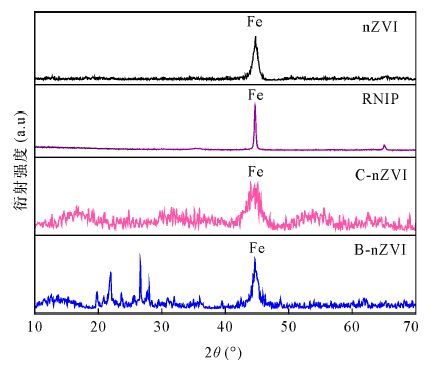
 下载:
下载:
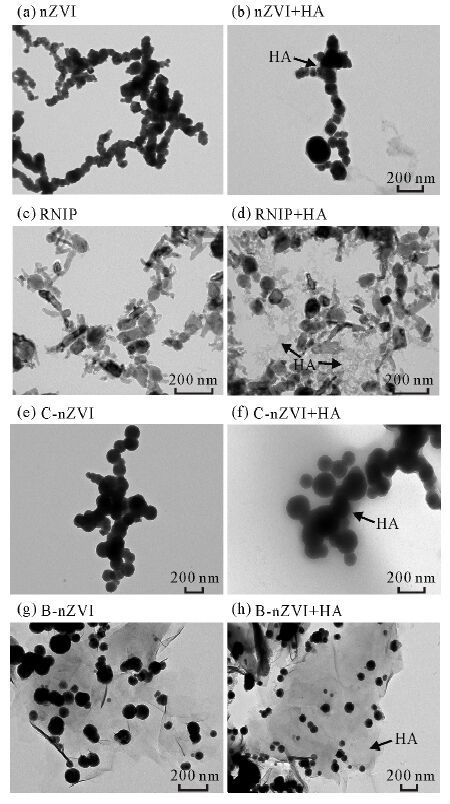
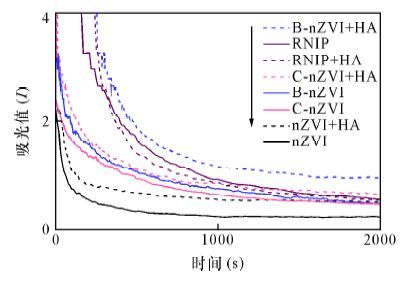
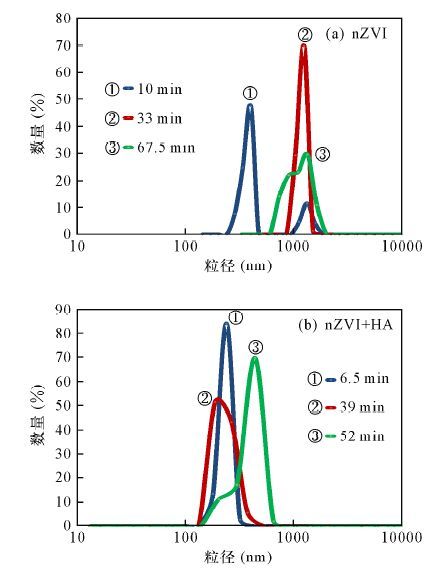
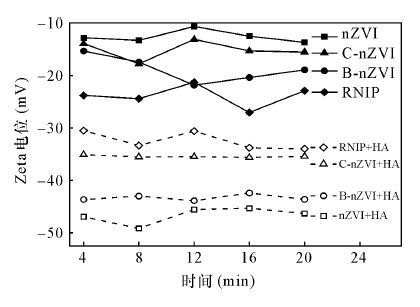
 京公网安备 11010202008159号
京公网安备 11010202008159号